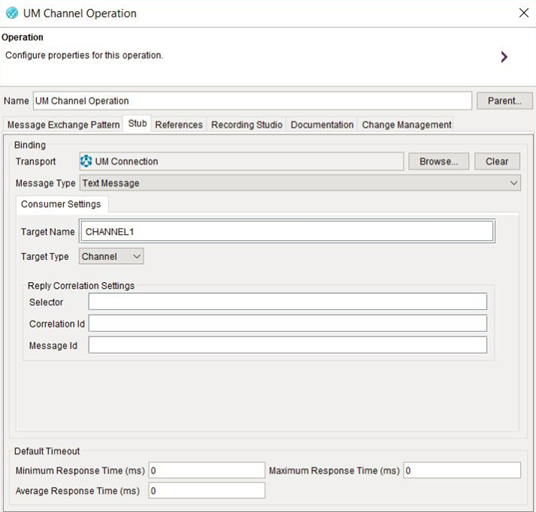Stubbing settings for Software AG Universal Messaging Broker transport
To simulate your application, you can specify the stubbing settings depending on the Message Exchange Pattern (MEP) defined for the Software AG Universal Messaging Broker transport.
Procedure
- To configure a stub, you must have an operation defined with the corresponding transport. See Creating an operation.
-
By using the Stub tab on the corresponding operation, specify the
binding information for messages that are exchanged by the operation.

- Select the logical transport and message type.
- Enter the target type and name. This information is used to indicate where the stub should retrieve the messages.
-
In the Reply Correlation Settings, indicate how the stub should retrieve
the messages.
Table 1. Reply Correlation Settings Option Description Target Name Enter the name of the Channel, Queue or Data Group from which messages are reviewed or retrieved. You must create a target name initially in Universal Messaging Enterprise Manager. Target Type Select the type of target that monitors the incoming messages. The target can be a Channel, a Queue or a Data Group. Selector This option applies to Channels and Queues. Enter filters for the incoming messages according to message header properties. Correlation Id Under the Reply Correlation Settings, you can add conditions to the messages received. Only messages that are matching these conditions are retrieved. Enter the ID for the message in the Correlation id field in the Reply Correlation Settings section. Message Id Enter the Id for the message in the Correlation id field in the Message id section. According to the MEP defined, the stub publishes the responses by using the value defined on the Reply in the MEP, under the Attributes tab, or by using the configuration as defined in the Activity tab of the Stub.